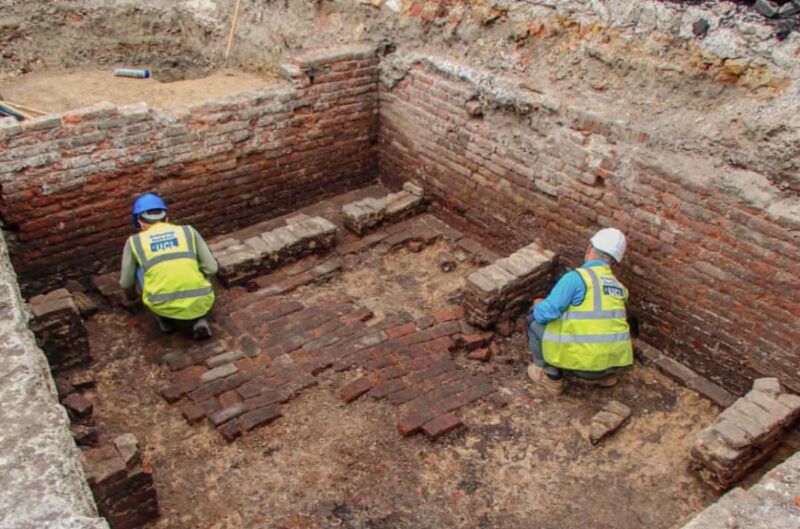Archaeologists may have found site of the Red Lion, London’s first playhouse

Enlarge (credit: Archaeology South-East/UCL)
Around 1567, a man named John Brayne built an Elizabethan playhouse called the Red Lion just outside the city of London to accommodate the growing number of traveling theatrical troupes. Its exact location has proven elusive to archaeologists-there were many streets and pubs named the Red Lion (or Lyon) over the ensuing centuries-but a team from University College London (UCL) believes it has found the original site at an excavation in Whitechapel.
The Red Lion is the earliest-known attempt to create a playhouse in the Tudor era, a precursor to the famed Globe Theatre. We know from historical documents-notably a pair of lawsuits involving Brayne's project-that it was a single-gallery multi-sided theater. A fixed stage was constructed, with trap doors and a 30-foot (9.1 meter) turret for aerial stunts. It was technically a receiving house for touring companies, as opposed to an actual repertory theater, and included the Red Lion Inn as part of its complex.
The Red Lion doesn't seem to have survived very long, perhaps because it was sited in open farmland and therefore only feasible for performances in the summer. Only one play seems to have been staged there, The Story of Samson. In 1576, Brayne partnered with his brother-in-law, actor/manager James Burbage, to build The Theatre at Shoreditch. (London banned plays in 1573 because of the plague-16th-century social distancing-which is why these early theaters were built outside the city's jurisdiction, in the so-called "suburbs of sin.")
Read 6 remaining paragraphs | Comments